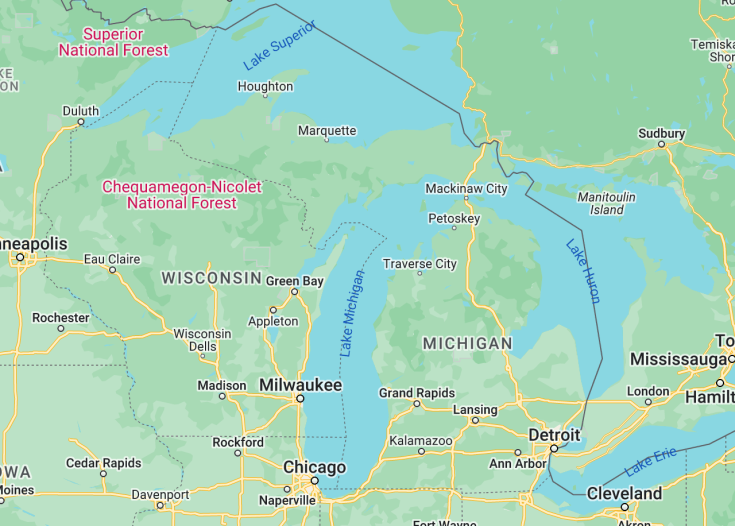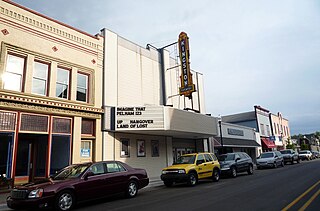Michigan, a peninsula state graced by the Great Lakes, is an enchanting fusion of natural beauty and urban sophistication. From the mesmerizing shorelines of Lake Michigan to the vibrant beats of Detroit, the state invites exploration at every turn. Rich in automotive history, adorned with quaint lighthouses, and boasting abundant forests and parks, Michigan offers both tranquility and excitement. Its seasons paint a canvas of ever-changing beauty, making every visit a fresh experience.
Embrace the local delicacy and savor a pasty, a traditional meat-filled pastry, especially prevalent in the Upper Peninsula.
For a serene autumn experience, journey along the Tunnel of Trees on M-119. The fall foliage is breathtakingly vivid, offering picturesque views.
Michigan: the great lakes state
| Capital | Lansing |
| Time in Michigan (USA) | GMT-4 |
| Language spoken | English |
| Population | 10,077,331 (source: United States Census Bureau) |
| Religion | Christianity (61.7%) Unaffiliated (31.6%) Other Religions (4.7%) Non-Christian Faiths (1.9%) |
| Currency | United States Dollar (USD) |
| Airports | University of Michigan Airport Willow Run Airport Gerald R. Ford International Airport Detroit Metropolitan Wayne County Airport Three Rivers Municipal Dr. Haines Airport Bishop International Airport Capital Region International Airport Mineral County Memorial Airport |
Michigan, affectionately termed the “Great Lakes State”, is an emblem of nature’s grandeur and the epitome of America’s industrial narrative. Situated in the Great Lakes region, Michigan is marked by its distinctive shape, cradling four of the five Great Lakes. Originally inhabited by Native American tribes, it was subsequently colonized by the French in the 17th century. By the 20th century, Michigan, specifically Detroit, emerged as the automotive capital, with Ford, General Motors, and Chrysler placing it squarely at the forefront of the automobile revolution. The state’s blend of natural beauty and its pivotal role in American industry make it a historically rich and diverse destination.
Where is Michigan located?
Michigan is located in the eastern part of the United States, surrounded by four of the five Great Lakes: Superior, Huron, Erie, and Michigan. It is bordered by the states of Ohio and Indiana to the south, and Wisconsin to the west. Its location in the heart of the Great Lakes region offers stunning natural beauty and unique recreational opportunities.
What is Michigan famous for?
Michigan is famous for its expansive coastline along the Great Lakes, which stretches for more than 3,000 miles. The state is known for its picturesque beaches, sand dunes, and vibrant coastal towns. It is also home to the iconic Mackinac Bridge, which connects the upper and lower peninsulas of Michigan.
History
Pre-European Contact: Native Inhabitants
Long before European settlers arrived, the region now known as Michigan was inhabited by numerous Native American tribes, including the Ojibwa, Potawatomi, and Ottawa. These tribes had established intricate trade networks, complex societies, and rich cultures, with their history etched in the land, waterways, and forests of the state.
1618 – 1763: European Exploration and Fur Trade
French explorer Étienne Brûlé is believed to be the first European to explore Michigan around 1618. The French recognized the area’s strategic and economic importance, with its vast waterways serving as critical routes for trade. As a result, the fur trade flourished, and the French established settlements and Jesuit missions, including the city of Detroit in 1701, founded by Antoine de la Mothe Cadillac.
1763 – 1787: British Control
Following the French and Indian War, control of Michigan transferred from France to Britain in 1763 under the Treaty of Paris. During this period, British trade policies favored the British merchants, leading to dissatisfaction among the Native American tribes. This discontent culminated in Pontiac’s Rebellion in 1763, a unified attempt by Native tribes to push the British out, although it was ultimately unsuccessful.
1787 – 1837: U.S. Territory and Road to Statehood
Michigan became part of the United States in 1783 after the American Revolution, but British forces did not abandon their forts in the region until 1796. In 1805, the Michigan Territory was established with Detroit as its capital. The territorial period was marked by struggles with Native Americans and tensions with the British, especially during the War of 1812. After resolving a territorial dispute with Ohio known as the Toledo War, Michigan was admitted as the 26th state in the Union in 1837.
1837 – 1900: Industrialization and Growth
Michigan’s vast timber resources made it a major center for logging in the 19th century. The state’s lumber industry fueled growth and the establishment of many new towns. Additionally, Michigan’s rich mineral resources, including iron and copper, attracted a significant influx of immigrants. By the late 19th century, Michigan began to shift from a resource-based economy to an industrial one, laying the groundwork for its 20th-century role as a hub of the automotive industry.
1900 – Present: The Automotive Capital
In the early 20th century, Michigan, particularly Detroit, became synonymous with the automobile industry. Visionaries like Henry Ford revolutionized both the state’s and the nation’s economy. The introduction of the assembly line and the Model T changed the landscape of American transportation and industry. While the automotive industry brought prosperity, it also faced challenges, especially during economic downturns. The latter half of the 20th century saw significant demographic and economic shifts, with a decline in manufacturing and a rise in the service and tech sectors. Despite challenges, Michigan remains a vibrant state, rich in history, culture, and innovation, looking towards a diverse and dynamic future.
Visit Michigan
What to see and do in Michigan
When visiting Michigan, there are plenty of attractions and activities to explore. Here are some highlights:
- Explore the stunning natural beauty of the Great Lakes, with opportunities for swimming, boating, and fishing.
- Visit the iconic city of Detroit, known for its rich history, vibrant arts scene, and architectural gems like the Detroit Institute of Arts and the Detroit Historical Museum.
- Discover the charming college town of Ann Arbor, home to the University of Michigan and a thriving arts and music scene.
- Experience the outdoor adventures of the Upper Peninsula, including hiking, camping, and wildlife spotting in places like Pictured Rocks National Lakeshore and Isle Royale National Park.
- Indulge in the culinary delights of Michigan, from the famous Coney Island hot dogs in Detroit to the fresh seafood in the coastal town of Traverse City.
Upcoming events in Michigan
Michigan hosts a variety of events throughout the year. Here are a few notable ones:
- The Detroit Auto Show (January): An international showcase of the latest automotive innovations.
- The Tulip Time Festival in Holland (May): A celebration of Dutch heritage with vibrant tulip displays and traditional food and music.
- The International Freedom Festival in Detroit (June/July): A cross-border celebration of Canada Day and Independence Day, featuring fireworks and concerts.
- The Grand Rapids ArtPrize (September/October): A prestigious art competition that transforms the city into an open-air gallery.
- The Mackinac Bridge Walk (Labor Day): An annual tradition where thousands of people walk across the iconic Mackinac Bridge.
Best time to visit Michigan
The best time to visit Michigan depends on the activities you are interested in. Summer (June to August) is ideal for enjoying the beaches and water sports on the Great Lakes. Fall (September to November) offers stunning foliage and pleasant temperatures, perfect for outdoor activities like hiking and exploring the vibrant autumn colors.
Winter (December to February) is popular among winter sports enthusiasts, with opportunities for skiing, snowboarding, and ice fishing. Spring (March to May) brings milder temperatures and blooming flowers, making it a great time for exploring gardens and attending festivals.
Is Michigan worth visiting?
Michigan is absolutely worth visiting for its diverse range of attractions and natural beauty. The Great Lakes offer unparalleled opportunities for outdoor activities, from water sports to hiking and wildlife spotting. The state’s cities, such as Detroit and Ann Arbor, have vibrant arts and cultural scenes, with renowned museums, theaters, and music festivals.
While Michigan has faced economic challenges in recent years, it continues to reinvent itself and offer unique experiences to visitors. From the historic charm of Mackinac Island to the bustling urban energy of Detroit, the state has something to offer everyone. Whether you’re a nature lover, a history enthusiast, or a foodie, Michigan will surely leave you with unforgettable memories.














